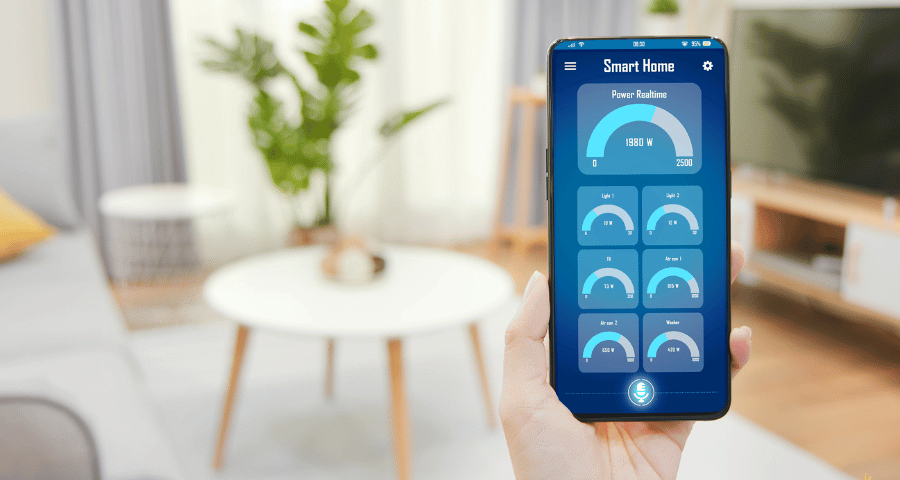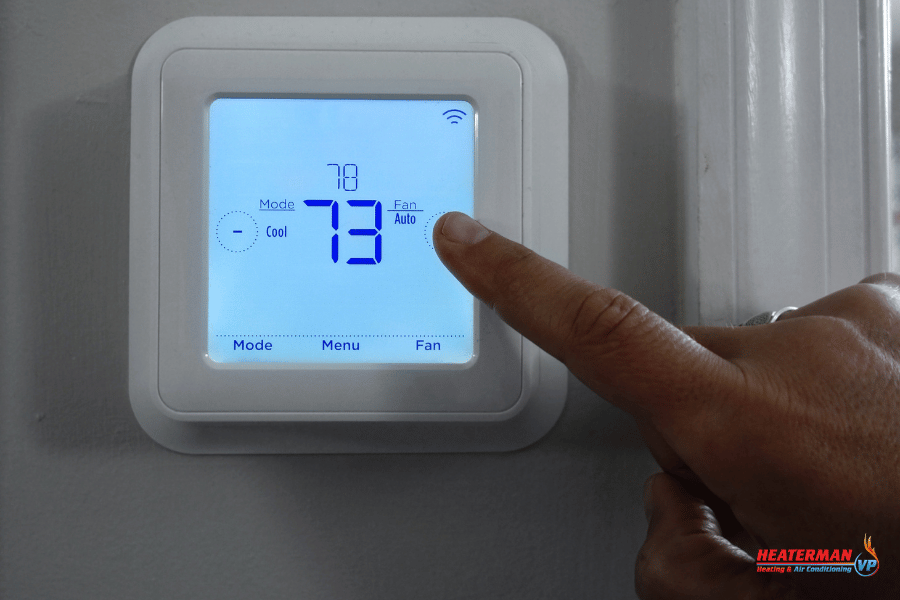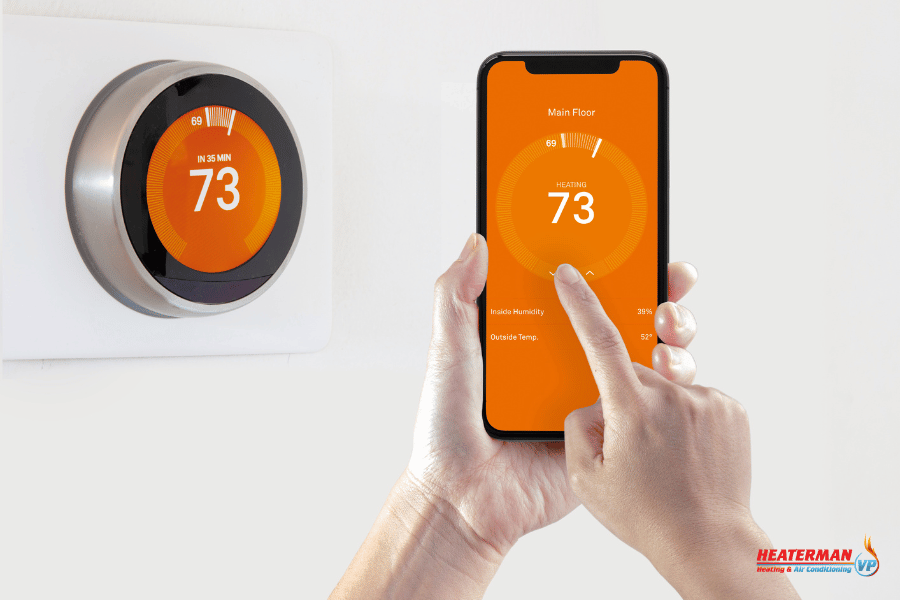
How Smart HVAC Systems Help You Save Energy All Year Long
With energy costs continuing to rise and environmental concerns becoming more urgent, homeowners across Suffolk County are looking for new ways to reduce their energy consumption without sacrificing comfort. The solution? Smart HVAC systems — an innovative approach to climate control that uses sensors, automation, and intelligent programming to optimize energy use year-round.
Smart HVAC technology goes beyond simple heating and cooling. These systems learn from your behavior, respond to changing environmental conditions, and make real-time adjustments to keep your home comfortable while using less energy. In this guide, we’ll explore how smart HVAC systems work, what makes them more efficient than traditional models, and how they deliver measurable energy savings across all four seasons.
What Makes a HVAC System “Smart”?
A smart HVAC system integrates advanced controls and connectivity to manage heating, ventilation, and air conditioning more effectively. These systems use:
- Smart thermostats with learning algorithms and geofencing
- Connected components (furnace, AC unit, heat pump, air handler) that communicate via a central hub
- Sensors to detect temperature, humidity, occupancy, and air quality
- Zoning systems to control different areas of the home independently
- Cloud-based data analytics for performance monitoring and predictive maintenance
Together, these technologies create a system that operates with far greater precision than traditional thermostats or fixed HVAC setups.
How Smart HVAC Systems Improve Energy Efficiency
1. Automated Temperature Adjustments Based on Occupancy
One of the most effective ways to save energy is to avoid heating or cooling unoccupied spaces. Smart HVAC systems use motion detectors, smartphone geolocation, or programmed schedules to reduce energy use when no one is home. When you return, the system automatically resumes your preferred settings.
This feature is especially helpful for busy households in Suffolk County, where occupants may leave home for school, work, or errands for long periods throughout the day.
2. Adaptive Scheduling and Learning
Smart thermostats use machine learning to track your daily routines and temperature preferences. Over time, the system creates a personalized schedule that adjusts automatically — even adapting when your schedule changes.
Rather than relying on static temperature settings, smart systems fine-tune output to maintain comfort with less runtime. This reduces the frequency of HVAC cycling, extending equipment life and lowering electricity and fuel usage.
3. Weather-Based Optimization
In coastal areas like Suffolk County, weather can change quickly. Smart HVAC systems monitor real-time weather forecasts and adjust accordingly. For example:
- Pre-cooling your home before an expected heatwave
- Reducing heating output if a warm front is approaching
- Delaying HVAC use during mild spring or fall days
By aligning system operation with outdoor conditions, these adjustments reduce unnecessary energy use.
4. Zoning and Room-by-Room Control
Zoning divides your home into separate climate areas, each with its own thermostat or sensor. With a zoned smart system, you can:
- Cool only the bedrooms at night while leaving the downstairs untouched
- Heat the home office during the day without warming the entire house
- Maintain a lower temperature in guest rooms when not in use
This targeted approach prevents energy waste and tailors comfort exactly where it's needed.
5. Humidity Management and Ventilation Control
High humidity in Suffolk County summers can make homes feel warmer, leading people to crank the AC — which increases energy use. Smart HVAC systems that monitor and control humidity can maintain comfort at higher temperatures, reducing overcooling.
In the winter, smart ventilation systems recover heat while exchanging stale indoor air with fresh outdoor air, minimizing heat loss while maintaining air quality.
6. Real-Time Monitoring and Feedback
Many smart systems include dashboards or mobile apps that show real-time energy usage and trends. These tools help homeowners:
- Track monthly HVAC usage
- Compare usage to similar homes
- Set goals for energy reduction
- Identify sudden spikes that may signal a problem
By giving homeowners visibility into how their system is operating, they encourage better energy management decisions.
Seasonal Smart HVAC Energy Saving Strategies
Winter: Efficient Heating Without Overuse
In cold weather, heating systems typically account for a large portion of energy bills. Smart HVAC systems reduce this load by:
- Lowering the temperature when you’re asleep or away
- Using outdoor temperature data to minimize unnecessary heating
- Activating zoning to warm only occupied rooms
- Sending maintenance alerts if filters are clogged or airflow is restricted
These systems can also coordinate with supplemental heat sources like heat pumps or radiant floors to maintain efficiency.
Spring: Managing Unpredictable Transitions
Spring weather in Suffolk County is notoriously inconsistent — warm one day and chilly the next. Smart HVAC systems help smooth these fluctuations by:
- Automatically switching between heating and cooling when needed
- Avoiding energy waste by adjusting ventilation and fan settings
- Maintaining consistent humidity levels for indoor comfort
The result is a more stable indoor environment without constant manual adjustments or overuse of the system.
Summer: Smart Cooling and Humidity Control
Cooling demand peaks in Suffolk County during summer, and traditional systems often run continuously to maintain set temperatures. Smart HVAC systems counter this with:
- Pre-cooling during lower energy rate hours
- Delayed or reduced cooling when rooms are unoccupied
- Monitoring for open windows or doors (some systems include sensors for this)
- Automatically adjusting fan speed or humidity settings based on indoor readings
By balancing comfort and efficiency, these systems reduce strain on your air conditioner and lower peak-hour energy consumption.
Fall: Preparing for Heating Season
As temperatures drop, smart systems ramp up heating slowly and strategically. Energy-saving features in fall include:
- Auto-adjusted heating schedules based on indoor temperature trends
- Coordination with smart blinds or shades to use solar heat during the day
- Recommendations for sealing drafts or scheduling maintenance if performance is degraded
Fall is also the ideal time to check smart system diagnostics to ensure your furnace or heat pump is ready for winter.
Long-Term Energy and Cost Benefits
Smart HVAC systems deliver measurable returns over time:
- Reduced Energy Usage: Studies show up to 20% reduction in HVAC-related energy use with smart systems
- Lower Utility Bills: Savings are most noticeable in homes with variable occupancy or unpredictable schedules
- Extended Equipment Life: Optimized performance reduces system cycling and wear
- Increased Home Value: Energy-efficient homes are more attractive to buyers and may qualify for green certifications
Many Suffolk County residents also qualify for utility rebates or energy efficiency incentives when upgrading to smart HVAC equipment — making the investment even more worthwhile.
Local Considerations for Suffolk County Homeowners
Smart HVAC energy savings can be especially impactful in Long Island due to:
- High Energy Rates: The average utility rate in Suffolk County is above the national average. Smart savings equal real dollars each month.
- Seasonal Extremes: Hot, humid summers and cold winters demand versatile climate control. Smart systems respond better than static ones.
- Older Housing Stock: Many homes in the region lack modern insulation or ductwork. Zoning and intelligent scheduling reduce energy waste in these conditions.
- Multi-Zone Living: Homes with basements, attics, sunrooms, or extensions benefit from room-specific comfort control.
Whether you’re in a new build or a historic home, smart HVAC can be tailored to your environment and usage patterns.
Overcoming Barriers to Smart HVAC Adoption
Despite the clear benefits, some homeowners hesitate to adopt smart HVAC systems due to:
- Upfront Costs: While smart thermostats are affordable, complete system upgrades can be expensive. However, energy savings often offset these costs over time.
- Compatibility Issues: Older systems may require updates to work with smart components. In many cases, adapters or retrofitting can solve these issues.
- Privacy Concerns: Data collected by smart systems is usually encrypted and anonymized, but it’s wise to review privacy settings and understand what is shared.
- Learning Curve: Initial setup and usage may seem complex, but most systems are designed with intuitive interfaces and learning features.
With proper guidance and planning, these challenges can be minimized — opening the door to long-term energy and cost savings.
The Bigger Picture: Smart HVAC and Sustainability
Beyond personal savings, smart HVAC systems contribute to broader environmental goals by:
- Reducing fossil fuel consumption and greenhouse gas emissions
- Lowering peak demand on the energy grid
- Supporting integration with solar energy, battery storage, or smart grid systems
As Suffolk County continues to emphasize sustainable development and energy conservation, smart HVAC systems represent a proactive step toward greener living.
Smart HVAC systems offer more than just high-tech appeal — they provide real, trackable energy savings that make a difference in your monthly bills and your long-term impact on the environment. By learning from your habits, adapting to local weather, and reducing wasteful operation, these systems help Suffolk County homeowners stay comfortable all year while using less energy.
Whether you’re trying to control costs, reduce your carbon footprint, or just want more control over your indoor environment, a smart HVAC system offers a powerful and future-ready solution.
Thinking about upgrading to a smarter HVAC system?
If your current setup is struggling or unexpectedly shuts down, our Emergency HVAC Services in Suffolk County team is here 24/7 to restore comfort and help guide you toward energy-efficient solutions.




